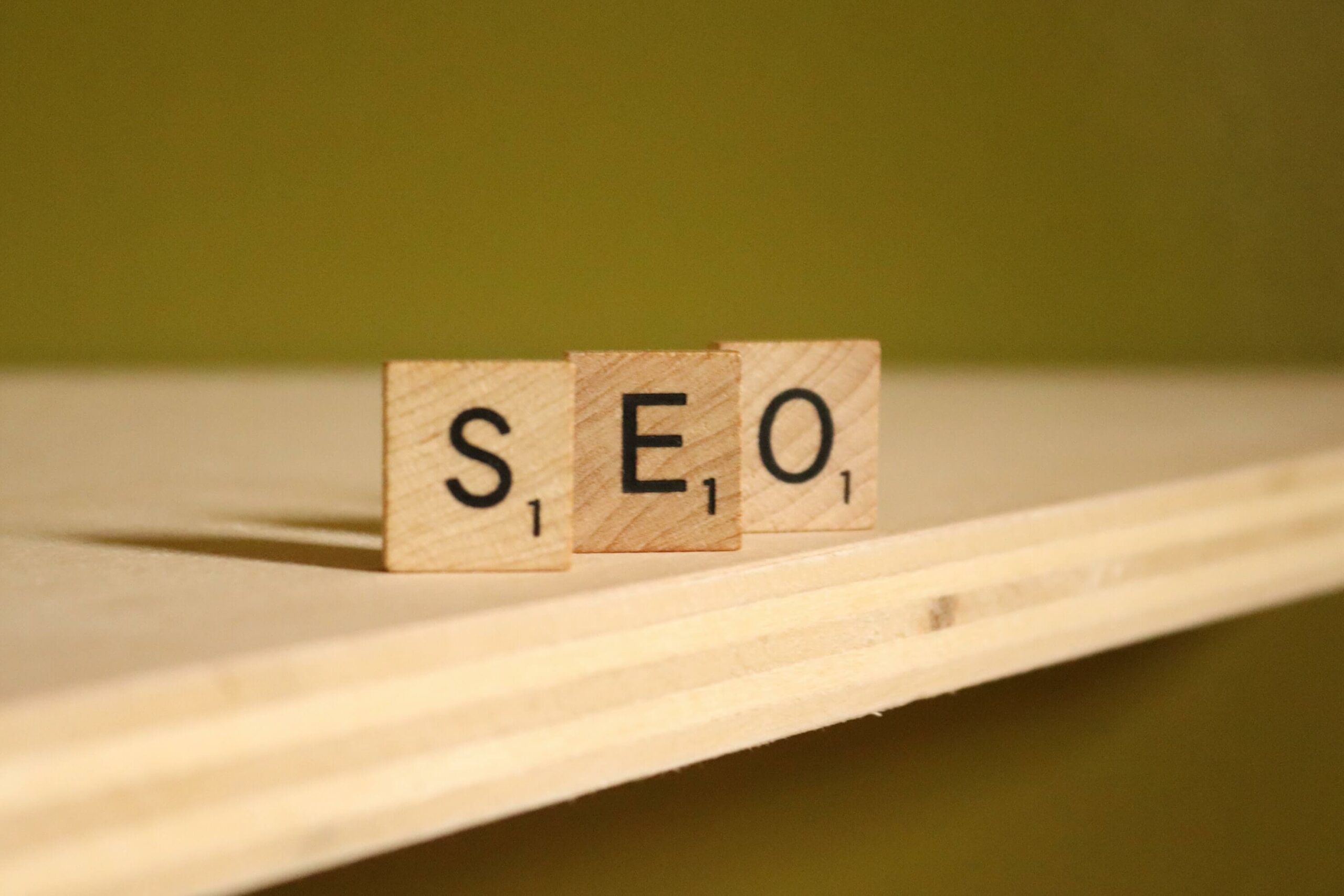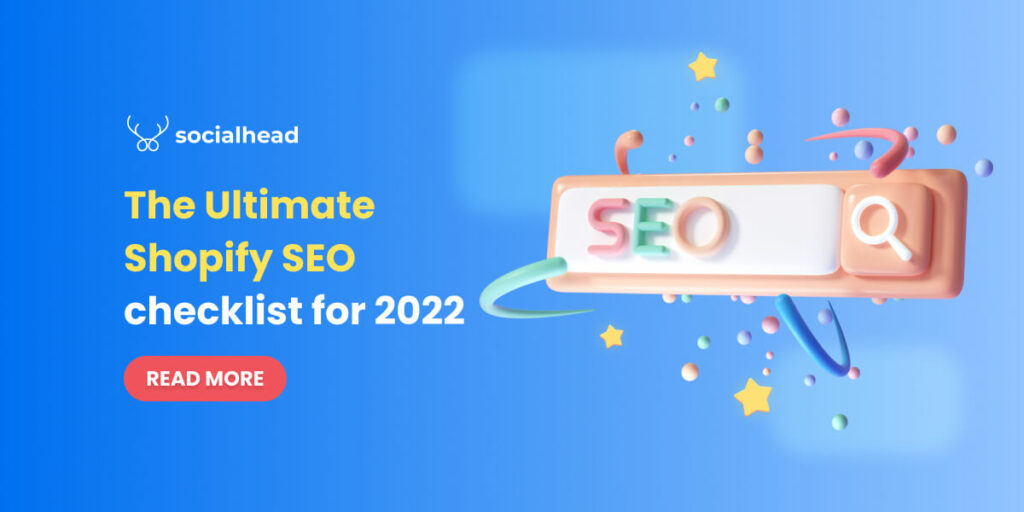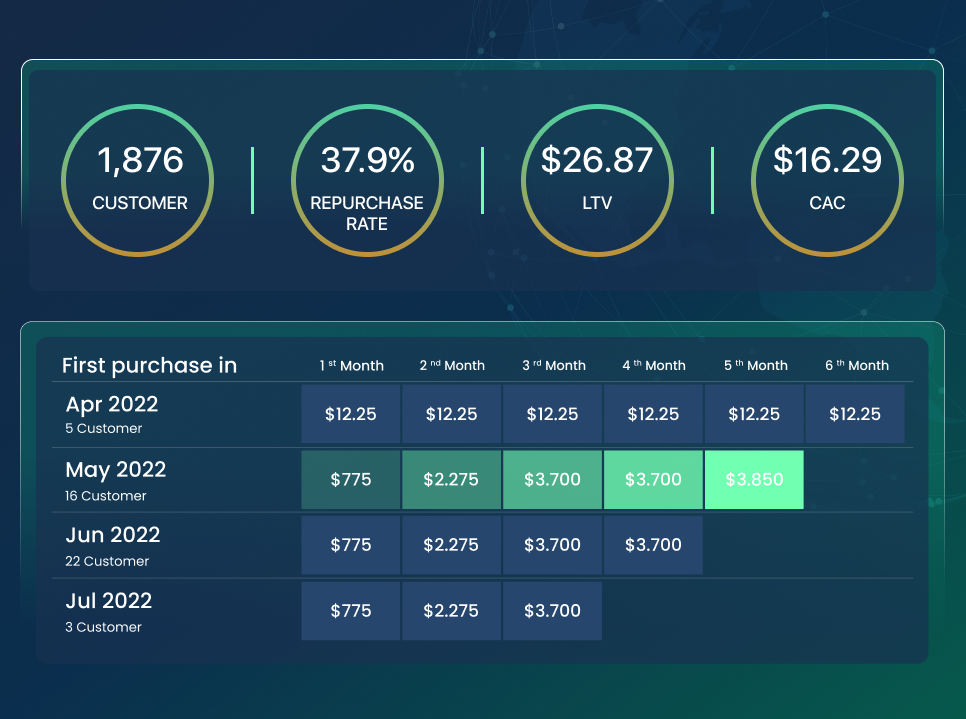Did you know that 75% of Internet users never scroll past the first page of a search result? (Hubspot). That’s why it is crucial for your business that your website appears on the first-page result.
You may all know the helpful tool to enhance your ranking on search engines is SEO. Luckily Shopify offers some SEO features for its merchants but it’s not enough.
If you’re looking for a solution to improve your product rankings on search engines to drive more sales this year, you’re in the right place!
In today’s article, we’ll present to you the ultimate Shopify SEO checklists to get you ahead of the eCommerce game!
Let’s dive in!
Table of Contents
What is Shopify SEO?
Shopify has long been one of the most popular eCommerce platforms that empower millions of live websites.
One of the strongest points of Shopify is that it caters to all business needs from sales to marketing and inventory management features. Wherever you’re from, whether you’re a beginner or a large-scale store owner, you can still find yourself a good place in this giant page builder.
Before finding out the Shopify SEO checklist for 2022, you should get started reading our Shopify Review to have an overview of Shopify Pros and Cons.
Regarding SEO, basically, SEO stands for Search Engine Optimization. It is the process ò improving the quality and quantity of website traffic to a website or a web page from search engines. Indeed, SEO has a huge influence on every online business especially in the prime of eCommerce.
When your website is on the top ranking on search engines for relevant terms, it means more people find and visit your website. Undoubtedly, SEO is of great help to increase your visibility on search engines, giving rise to boosting organic search results and revenue.
Combining the two particular terms above, we can understand that SEO for Shopify refers to the process of optimizing your Shopify website for search engines so that you could reach more customers via organic search.
In fact, Shopify comes with some useful things for SEO such as a blog and the ability to redirect. However, it can also create SEO issues like duplicate content. Luckily, there are some tips and apps that help you improve your store’s performance and handle the limitations of Shopify SEO.

The Ultimate Shopify SE0 checklist – Socialhead
Why do we need to optimize Shopify SEO?
As a matter of fact, Shopify has built-in SEO features such as image optimization, automated sitemap, meta tags as well as product descriptions so this platform can provide several benefits to your eCommerce website.
It generates an automated map online shop and lets users edit and change meta tags, alt messages, and URLs so that Google’s search engines can identify and categorize your website.
Therefore, you will be able to increase your organic search traffic, boost your sales without paying for external marketing or advertising campaigns. That’s when our Shopify SEO checklist comes in handy.
The ultimate Shopify SEO checklist
1. Research keyword
The success of implementing Shopify SEO strategies heavily relies on keywords. Keyword is on the top list of Shopify SEO checklist for some reasons. Finding precise, specific keywords makes it easier for potential customers to locate your business.
Because search engines may reject unreadable keywords, they must be in the form of readable, natural phrases or sentences. So, how to carry out such keyword research?
First, it is critical to comprehend the demands of clients. Put yourself in your clients’ shoes to discover what their problems are, what they’re seeking for, and so on. You can categorize keywords into the following groups:
- Navigational: People are seeking a certain website to visit.
- Informational: Customers are looking for information to answer a query.
- Investigational: People are looking for particular information that might lead to a positive outcome.
Understanding what people are looking for at different periods, you can identify target keywords in order to reach more customers with relevant information.
Second, you should utilize specialist research tools to locate the relevant keywords on a large scale. The Google Keyword Planner tool is a great tool for this challenging task. This tool can show you the number of competitions and how many monthly searches it has both locally and globally.
Thanks to that, you can come up with better unique keywords for your website. Other useful tools in Shopify SEO checklist for 2022 you can try include Google Analytics, Google Search Console, Soolve, Google Trend to name but a few.
Google Keyword Planner shows how much competition there is for this keyword
There are four basic sections of your website where you may use keywords to increase search engine optimization: title, meta description, header body and ALT text.
- Title
- Meta description
- Header body
- Alt text
2. Optimize your Shopify website
Besides keyword research, your Shopify store optimization is of great importance to rank top 1 on search engines. There are 5 things you need to bear in mind.
Optimize your website’s structure.
The structure of a website is one of the most critical aspects of doing SEO for Google or other search engines. However, your visitors are human, not robots. Your site structure must be search engine friendly while also ensuring good UI/UX to maximize customers’ experience.
Google tends to highly evaluate a clear, straightforward and well-organized website’s structure. That means the more optimized your website is, the more likely it is that Google will direct searchers to your website.
Moreover, this can grab customers’ attention and keep them stay longer with the website. Thanks to that, the bounce rate and exit rate will less likely to rise.
A well-organized structure store is really good for Shopify SEO
Avoid duplicate content
Another issue on your Shopify website is duplicate content. It is prone to be neglected but its impact on your store’s ranking is quite tremendous as this can lead to poor research results.
Google doesn’t like this and neither do the customers. That’s why we provide solutions to avoid duplicate content in Shopify SEO checklist for 2022.
Here are 3 situations when you might run into duplicate content and the solution for each:
- Duplicate product pages: You can either set up a 301 redirect or a canonical tag.
- Identical product descriptions: Always try to differentiate your product descriptions from other websites.
- Your domain and myshopify version of it: Shopify keeps two versions of your website, so follow 4 steps to fix this.
#1: Login to your Shopify store admin
#2: Click on ‘Online Store’ and select ‘Domains’
#3: If you see the message ‘Traffic from your domains is not being redirected to this primary domain’ then the two versions of your store are both being seen by Google
#4: Click on ‘Enable Redirection’
You should take good care of your domain to avoid duplicate content issues
If you want to refer to the former content, use an internal link to avoid the same information in two posts. You can go to Shopify’s final page and alter the internal link and prioritize this link so that search engines don’t mistake them for duplicate content.
Create a compelling title and meta description
Next in our Shopify SEO checklist is meta titles and descriptions which display first when buyers conduct research.
They are one of the most vital elements that influence your website’s ranking in search engines. Impressive and attractive titles and descriptions, on the other hand, might capture their interest and lead them to click the link.
There are two principles to follow while creating product titles and descriptions:
- Firstly, your title and description must be descriptive, original, and easily comprehensible.
- Secondly, they must include content-related target keywords. This allows search engines to easily recognize what your business is about, then categorize it more accurately. Without a doubt, you can reach out to more prospective customers.
- Thirdly, they need to be SEO-friendly. It implies that they are concise but engaging enough to encourage people to learn more about your business or products. A good title should be 60 characters long, and a good meta description should be roughly 160 characters long.
A catchy title with detailed description will attract customers and make it easy for Google to recognise.
Optimize images
Heavy images could lead to a slow page loading speed. Meanwhile, research shows that customers are impatient.
According to The Page Speed Report Statistics, if the website takes more than 6 seconds to load information, 32.3 percent of customers will abandon their purchase or visit. Only 5.6 percent are willing to stay and wait for 11 to 13 seconds. They suggest the ideal loading time should be under 3 seconds as fast page speed contributes to positive customers’ experience.
Therefore, image optimization is on our Shopify SEO checklist. There are three main factors to consider in terms of image optimization:
- Image file format: The best format is JPEGs. They provide the best image quality for the smallest file size.
- Image size: Try to keep your image file size below 70 kilobytes.
- Comprehension level: The image brings many values to your website, but their descriptions are important as well. The search engines are unable to read the image so the image’s name and alt text have their job to explain what this image is about. Each image requires one equivalent name and alt text.
Here are some of our pro tips to optimize your image for Shopify SEO:
Tip #1: The more specific information you provide, the better.
The more detailed information is in the description, the higher chances the search engine will rank your image. This will help the image rank higher in Google Image thanks to its algorithm.
Tip #2: Be relevant to the image’s theme
Each image needs to have an equivalent name. Do not use the name by default, instead, you should make a descriptive name and separate it by each dash (-). For instance, the image shows two trusted badges, then its name should be “two-trusted-badges. JPEG”, not “IMG93822.JPEG”.
The alt-text field is not the place to stuff keywords. Instead, it should be utilized to accurately describe the image.
Tip #3: Be distinct.
Make sure that each alt text only supports one picture; otherwise, the search engine will consider it spam and lower your ranking.
- Image height and width: You are recommended to go for 2560 pixels in width with any height.
Be friendly with mobile
When browsing a page but you can’t completely read or see the content or items, it’s infuriating. Not to mention that clients are unaware of an existing product since the smartphone screen is too small to see it.
As a result, one of the most important choices on the Shopify SEO checklist is Responsive Web Design. This utility adapts your Shopify store to work with many types of gadget devices, including computers, iPads, and smartphones.
Responsive Web Design is the best solution to improve your Shopify store performance in all devices
3. Set up effective URLs
Page URLs provide search engines and customers with a signal about what a certain page is about. In reality, Google gives more relevance to URLs by moving them to the top of each search result.
An effective URL will boost your ranking in search engines.
Here are some of the best tactics that you could follow to optimize your URL:
- Create a short URL: It will be easier to comprehend and remember.
- Customize the URL: To increase brand recognition, add your company’s name to the URL.
- Avoid using symbols: They are unprofessional. It’s possible that readers will find it untrustworthy.
4. Implement a powerful link strategy
Every website, even online stores, consists of internal and external links. Internal links connect pages and posts on your website whereas external links connect your pages to other websites.
Google uses links to discover content on websites and to rank this content in the search results. If a lot of links point to a specific page, this is a signal to Google that it’s an essential or high-value article.
Therefore developing a link strategy is definitely one of the best tactics in our Shopify SEO checklist.
Make sure to include descriptive link language when adding a link to a page in your online store in a product or collection description, or in the content of a webpage or blog post.
There are two types of links you should take into account to improve Shopify SEO.
Internal link
Regularly evaluating and improving your internal linking strategy is critical for your site’s SEO. It’s one of the most effective approaches to boost your website’s health. By adding the right internal links, you make sure Google understands:
- The relevance of pages.
- The relationship between pages.
- The value of pages.
External link
External links are links on your site that lead to another domain.
When you’re linking out to relevant and authoritative domains, it not only helps the search engine know your topic but also helps to boost the reputation and quality of your site, both of which are important factors in the SEO of your blog.
Here are some ideas for building outbound links:
- Link to pages that provide real value and are thorough in the coverage of the subject.
- Link to highly authoritative articles.
- Add external links in moderation
5. Use tracking and indexing tools
Every seller wants to know how effective your website is, to keep track of the traffic so that you can find a solution to improve the situation or keep promoting your business. Here are two effective tools.
Google Analytics
Google Analytics is the clear champion when it comes to tracking internet traffic for e-commerce enterprises. It provides extensive statistics on how many people have visited your online store, the pages they’ve viewed, user demographics, and traffic sources.
You may discover your website’s traffic sources by looking at your Google Analytic data. Google Analytics shows you detailed reports on: Organic Traffic, Referral Traffic, Social Traffic, Direct Traffic, Email Traffic.
To check if your website traffic is falling or rising, you may want to compare different website traffic sources and time periods (for example, the last 30 days or the last 7 days). This can assist you in tracking:
- Where on your website or landing pages may your sales be affected?
- How well it’s doing, and which links are bringing in the most traffic?
Google Analytics shows your store’s the audience overview
Google Search Console
Google Search Console is the other tool in Shopify SEO checklist. This tool is a free Google service that allows you to track and improve a variety of technical elements of your website, including: Number of indexed pages, Security Issues, Number of Links, Number of Impressions and Clicks for Selected Keyword Searches, Sitemap.
Google Search Console is often the first port of call for a brand new website. Google will identify, crawl, and index your web pages faster if you submit a sitemap for your freshly opened Shopify store.
GSC also warns you of many significant messages like crawling errors, security issues etc in terms of notifications.
Google Search Console helps in tracking every detail of your website
Why not take advantage of these free helpful tools for better Shopify SEO?
6. Use Shopify SEO Apps
When it comes to Shopify SEO checklist, we cannot leave out Shopify apps. The Shopify app store is a great source of third-party applications that could greatly assist you in enhancing the SEO features of your original Shopify store.
The great thing about those apps is that most of them come with multiple functions. For example, you can use Booster SEO & Image Optimizer not only to optimize your images but also to guarantee the link stays in a good construction.
Booster SEO & Image Optimizer helps you climb the rank by automatedly optimizing your Shopify SEO
What’s more? If you want to sell on Google Shopping or Facebook shop and you want to sync and optimize your feeds for higher conversion, Socialshop can help.
Sync and optimize all of your product feeds to Google Shopping and Facebook Shop in one place with Socialshop
For more app recommendation and evaluation, you can check out our Top 10 Shopify SEO Apps To Increase Your Store Ranking.
Conclusion
The more SEO optimized your Shopify store is, the higher in the search results it will show up. Take your time to thoroughly investigate our Shopify SEO checklist, maybe you can find out some useful tips.
Then don’t forget to apply it to your Shopify page, you will be surprised by its effectiveness. We hope that article is informative and helpful to your online business.
 socialhead
socialhead






